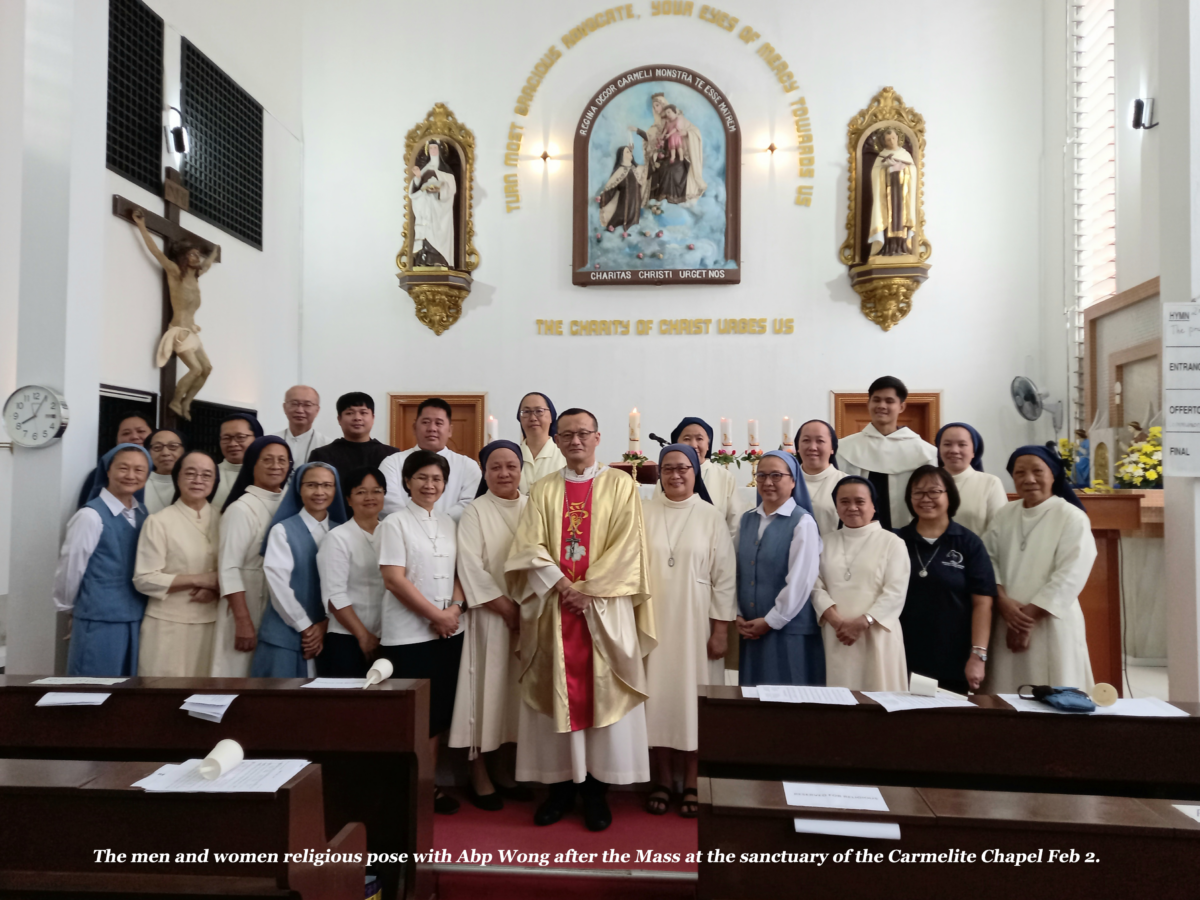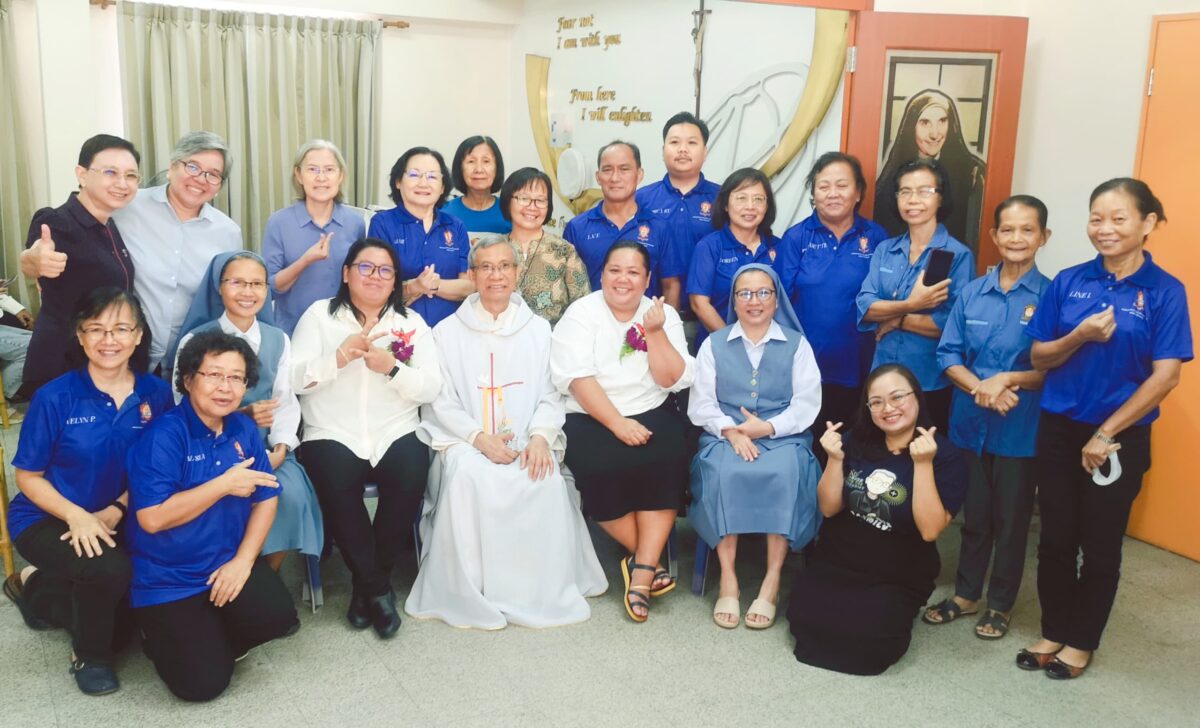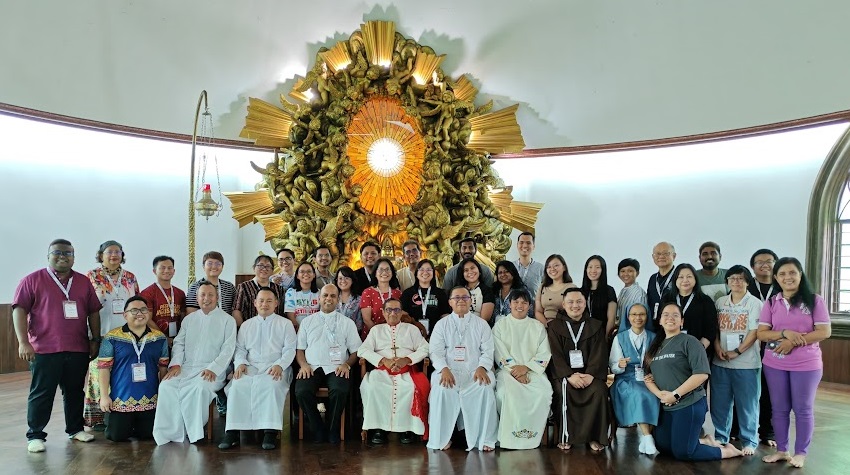SHC celebrates Lunar New Year with something more

KOTA KINABALU – Sacred Heart Cathedral here celebrated the Lunar New Year with “something more” on 8 Feb 2016. The “something more” was the tambourine dance added to the usual drummers during the 15-minute display before Mass. The participants – five drummers and five dancers – were children ranging from kindergarten to Form One. The drummers were led by 10-year-old Jessica Liew. According to its coordinator, the tambourine dance is based on the story of Joshua and the capture of Jericho (Jos 6:1-20), the tambourine substituting the ram’s horn trumpet.
The tradition of having a Chinese drum beaten during the Lunar New Year Mass started in 1989, beginning with one drum under Patrick Lee. Later it evolved and became what it is today – a separate presentation showcasing the skills of the young drummers who practise under Lee.
Archbishop John Wong presided over the concelebrated Mass with an overflowing congregation, many of whom were attired in red. The concelebrants were Abp Emeritus John Lee, Fathers Cosmas Lee, Joseph Fung sj, Wilfred Atin, Jeffri Gumu, Rhobby Mojolou and Abel Madisang.
In his homily, the presider touched on the importance of the family meal seen in the reunion dinner on the eve of the new year. However, he pointed out the sad reality that nowadays family members spend too much time on their electronic gadgets rather than spending time talking and sharing with each other. He also called on the parishioners to heed Pope Francis’ message in saving the environment as well as to be “merciful just like the Father.”
Symbolic gifts of lighted candles, flowers, vegetables, fruits, kuazi were brought to the sanctuary along with the bread and wine during the Presentation of Gifts. The rite of three bows to the altar (representing God), to the clergy by the people, and to each other took place before the blessing and distribution of mandarin oranges by the clergy to the people.
It is customary for the organisers to invite a lion dance troupe to perform in front of the parish centre after Mass. But this year there was something more: not just the lions came but also a dragon and a unicorn came from the same troupe – the You Yi Troupe. Among the several lions that came, there was one blue-and-silver lion with two long feathers on its head, representating Sun Wukong or Monkey King of the “Xi You Ji” (Journey to the West) saga, being Year of the Monkey. It was this blue-and-silver lion that performed on the poles.
In Chinese Culture, the lion symbolises strength, stability and superiority, while the dragon represents power, boldness and excellence. The dance performances are meant to chase away evil spirits and welcome prosperity. Both traditions date back to the Han Dynasty (206 BC –220 AD) in China. Dancers feed the lion used in the dance with lettuce, because the Chinese word for “lettuce” sounds similar to the word for “wealth.”
The Qilin or Chinese unicorn is the most important of the four sacred animals (Qilin, Dragon, Phoenix, turtle) in Chinese mythology. Like the dragon and phoenix, the Qilin has features of various animals and as it resembles the Western Unicorn, it is also known as the Chinese Unicorn.The Qilin is said to appear only during auspicious times or during periods of great peace and harmony. Since these are ideal social conditions that people aspired to, the Qilin is often shown in various art forms and used as a decorative symbol. Qilin dance is especially prevalent among the Cantonese and Hakkas dialect groups and is performed during festive and religious events.
Performing a dragon dance can require up to 100 people, while a lion dance is usually performed by two people. The unicorn dance is different from the lion dance; when performing the unicorn dance, the dancers use very low and high stances. The head of the unicorn moves in a circular motion from left to right and looking backwards, and also moves in little shaking movements. But for the lion dance, the lion’s head shakes mostly up and down, and the dancers are high on their legs. All the dancers move to the sounds of the cymbals, gong and drum.
The unicorn dance is nothing new to older parishioners of Sacred Heart Cathedral who are predominantly Hakkas. Some can recall that under the late Thomas Lee (father of Abp Emeritus John Lee), students from Kung Ming Primary School (now Shan Tao Primary School) performed unicorn dances which were displayed unfailingly each Lunar New Year since the school was founded in 1938. The Lee Family was involved in the troupe until the early 1980s. After that it was the family of James Lee (the father of Patrick Lee, no relation to Thomas Lee) who formed a new troupe. At present there is no active church-related troupe.




